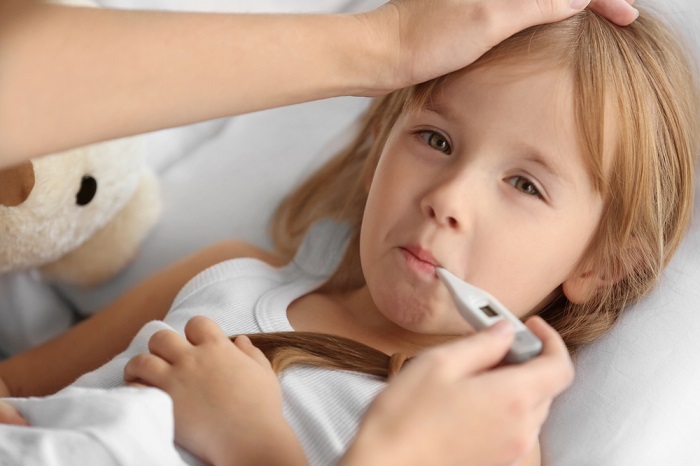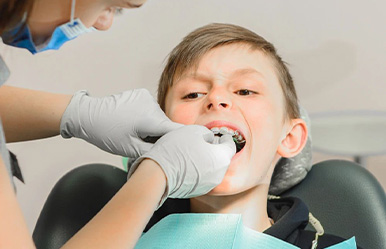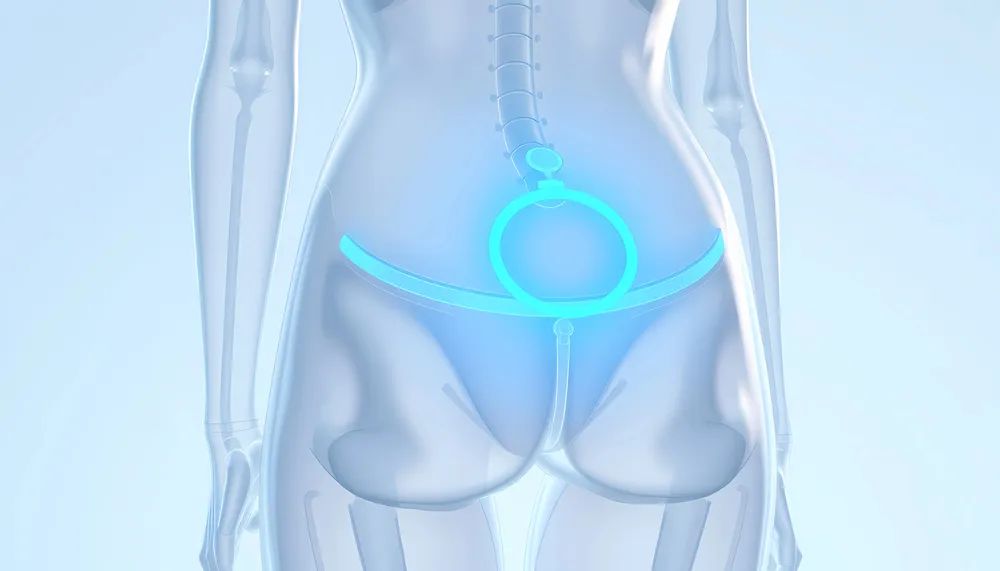Childhood Fevers: Your Questions Answered
2021-06-18

Fevers in children can be managed at home as long as you
know when it’s time to see a doctor.
What determines a fever?
Your child is running a fever if he or she:
- Has a rectal temperature of 38°C or higher
- Has an oral temperature of 37.8°C or higher
- Has an armpit temperature of 37.2°C or higher
Forehead temperature readings may not always be a reliable gauge for fever. Whenever in doubt, use another method to confirm the results. Always make sure to use a reliable thermometer too.
Why does my child have a fever?
A fever is our body’s natural defense reaction to an infection caused by germs that have entered the body. With a higher body temperature, germs will find it harder to multiply as our immune system kills them off. Infections in children may not necessarily be bad as they can help build up their immune system.
There are two types of germs that cause infections:
- Viruses
- Bacteria
Most of the time, your child’s fever will be due to a self-resolving common virus that the immune system will fight.
Bacterial infections, on the other hand, may get worse if not treated with antibiotics.
One important point to note is that the height of the fever does not correlate to the severity of the child’s illness.
The common cold or other viral infections can sometimes cause relatively high fever (in the 38.9 – 40°C range), but this doesn’t usually indicate a serious problem. Serious infections, on the contrary, may not cause fever and could present themselves as abnormally low body temperatures, especially in infants.
A fever may also cause chills as the body tries to generate additional heat, resulting in a higher body temperature. A child may also sweat as the body releases extra heat when the temperature starts to drop.
How long will my child’s fever last?
In most cases, a fever on its own is harmless and should subside in 3 – 5 days. Keep your child comfortable and let the body do its part in fighting the fever naturally. However, keep watch to make sure the fever does not escalate.
How do I make my child comfortable?
There are many ways you can manage the fever and keep your child comfortable:
- Place a cool compress on the forehead
- Keep the room at a moderate temperature – not too hot and not too cold
- Dress your child in a layer of light clothing
- Use a light blanket when sleeping
- Cool your child off with lukewarm sponge baths
- Make sure your child drinks a lot of fluids to prevent dehydration
- Let your child eat as much as he or she can. What’s important isn’t how much your child is eating, but if they are still drinking and urinating normally.
- Keep your child indoors
- Let your child rest as much as possible
- Give your child paracetamol or ibuprofen in accordance with the recommended dosage for children.
Never give aspirin to children. It can result in a higher risk of Reye’s syndrome, a rare but very serious condition that causes swelling in the liver and brain.
Infants under two months of age should not be given any medication for fever without being evaluated by a doctor.
Why is my child’s fever higher at night?
Children are more prone to getting fevers as their immune systems aren’t fully developed. But do not be alarmed if your child’s fever is higher at night. Body temperatures rise naturally in the evening, so a slight fever in the day can easily spike during sleep.
My child has a fever and other symptoms. Should I be worried?
The general symptoms commonly associated with a fever can include:
- Shivering
- Cold hands and feet
- Tiredness and discomfort
- Aches and pains
- Headaches
- Sweating or feeling flushed
- Lack of appetite
- Weakness or lack of energy
These symptoms are usually not a cause for concern. Over-the-counter medication can help relieve them.
When should I call a doctor?
While the body is very adept at fighting infections, bring your child to see a medical professional if you note these warning signs:
- Your child is younger than two months and has a temperature of 38°C or more
- Your child is aged 3 – 6 months and has a temperature up to 38.9°C or more
- Your child has a persistent fever that lasts for more than 72 hours.
The following symptoms are abnormal and could be a sign of a serious infection. Your child should receive immediate medical attention.
- Extremely sleepy or irritable
- Trouble breathing
- Rashes or purple spots that look like bruises on the skin
- Pain, redness, or swelling in a localized area
- In infants, the soft spot on the head bulges out or is sunken inwards
- Drinking very little water
- Severely decreased urination or pain with urination
- Heavy coughing
- Vomiting
- Seizures
- Has difficulty walking
- Has blue lips, tongue, or nails
For more information or to make an appointment, please contact us at 400.819.6622.
Article reviewed by Dr. PJ Chiang, Family Physician at
ParkwayHealth Suzhou
Copyright: Health Plus an online health and wellness web resource developed by Parkway Singapore
References:
Thermometer basics: Taking your child’s temperature (n.d.).
Retrieved June 1 2019 from
https://www.mayoclinic.org/healthy-lifestyle/infant-and-toddler-health/in-depth/thermometer/art-20047410
Treating Fever in Children (n.d.). Retrieved June 1 2019
from https://www.webmd.com/first-aid/fever-in-children-treatment#1
What to Do When Your Kid Has a Fever (n.d.). Retrieved June
1 2019 from https://www.webmd.com/children/guide/treat-fever-young-children#1
O’Keefe Osborn, Corinne (n.d.). How to Treat a Viral Fever
at Home. Retrieved June 1 2019 from
https://www.healthline.com/health/viral-fever-home-remedies
Timmons, Jessica (n.d.). Baby Fever 101: How to Care for
Your Child. Retrieved 1 June 2019 from
https://www.healthline.com/health/parenting/baby-fever-101
Seladi-Schulman,
Jill (n.d.). Symptoms of Fever in Adults, Children, and Babies, and When
to Seek Help. Retrieved 1 June 2019 from https://www.healthline.com/health/fever-symptoms





























